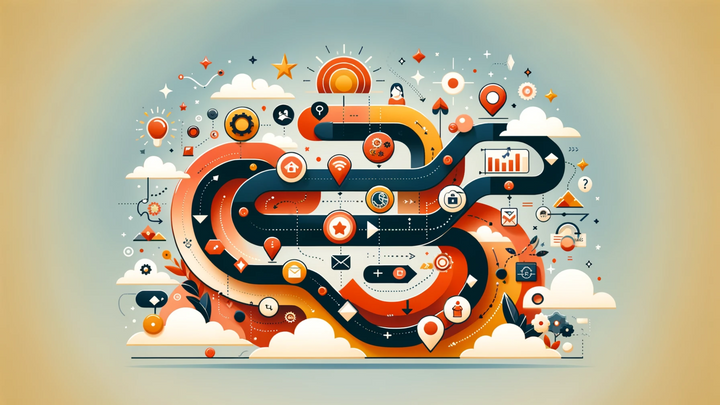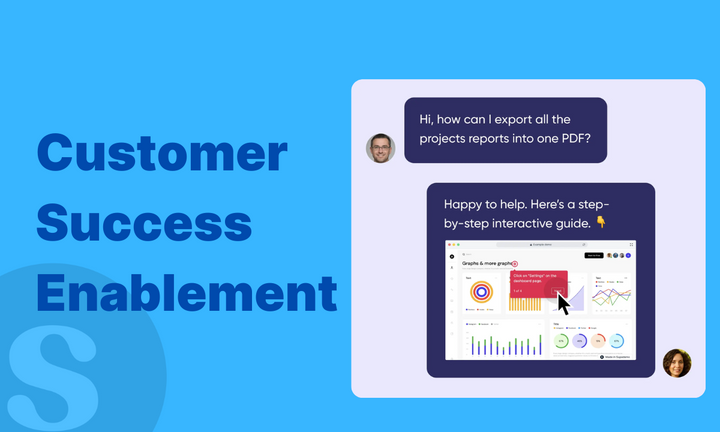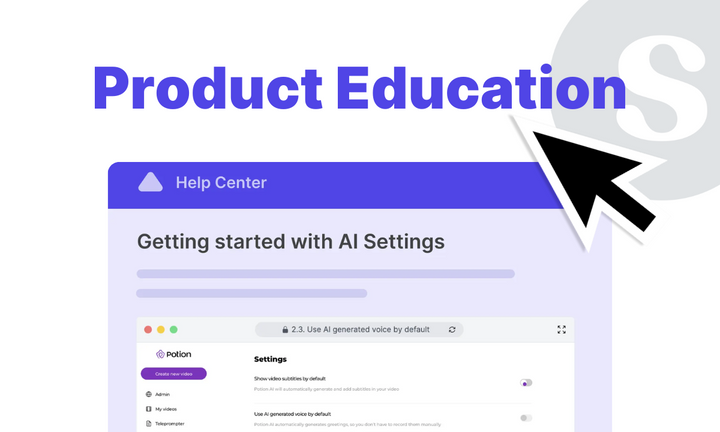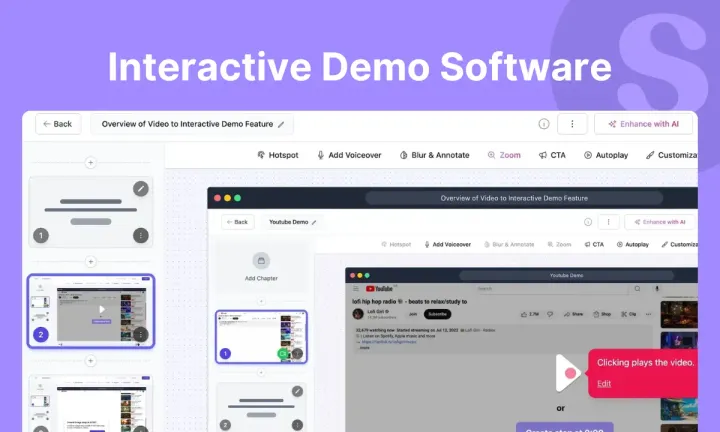Maintaining visibility into customer relationships and ensuring customer success can be challenging, especially when dealing with a growing customer base and evolving industry trends. However, having a clear customer success lifecycle can make all the difference. It provides a framework for guiding your team through each customer interaction and helps them stay focused on the right goals. In this comprehensive guide, we will explore the concept of a customer success lifecycle and provide step-by-step instructions on how to create one that is easy to navigate for both customers and your team.
What is the Customer Success Lifecycle?
The customer success lifecycle is a customer-centric approach to creating and delivering value while using your product or service. It encompasses the entire journey that customers undertake, from understanding their needs, onboarding them, providing ongoing support and training, and ultimately leading them to a successful outcome that keeps them engaged with your product or service. It is crucial to describe the customer success process clearly and transparently for each employee to ensure they don't lose sight of the big picture or lose track of each customer as they move through different teams within your organization.
Customer Journey vs. Customer Lifecycle
Although the terms "customer journey" and "customer lifecycle" are often used interchangeably, they have distinct meanings. The customer journey refers to the steps customers take before and after their initial contact with your company, while the customer lifecycle describes the entire period from the first contact to the end of the relationship.
By mapping out customer lifecycles, businesses can gain a better understanding of their customers' experiences with their industry, company, and product or service offerings. On the other hand, customer journeys help companies connect with customers across various channels and touchpoints. Both concepts are essential for creating a powerful force for innovation and improvement in your overall product marketing strategy.
Customer Journey:

Customer Lifecycle Stages
The customer lifecycle consists of several distinct stages that customers pass through during their relationship with your brand. Understanding these stages is crucial for optimizing customer success and delivering value at each step of the way. Here are the six key stages of the customer lifecycle:
1. Awareness
The awareness stage is the first step in the customer lifecycle. It is when a customer or prospect first becomes exposed to your brand. This initial exposure can occur through various channels, such as advertisements, social media posts, word-of-mouth referrals, or conversations with friends and family. In today's marketing landscape, word-of-mouth plays a significant role as trust becomes a primary factor for customers when choosing a brand.
2. Consideration
The consideration stage is when a customer begins to actively think about your brand and considers it as an option. This consideration may be triggered by something they've seen, heard, or read. Research shows that most users conduct independent searches and evaluate various online options before considering a specific product or service. To progress in the customer lifecycle, customers need proof that your offering is worth their investment in terms of both time and money. This can be achieved through free samples, demos, trials, or discount codes.
3. Preference
In the preference stage, customers have narrowed down their options and selected your brand as their preferred choice. They are now seeking proof that your product or service can meet their expectations and deliver the value they desire. Demonstrating value and providing evidence of your product's benefits are crucial to solidify your position as their preferred solution.
4. Purchase
The purchase stage is where customers make the final decision to buy. It is essential to provide the necessary guidance and support during this stage to ensure a smooth purchasing process. Offering resources such as FAQs, live chat support, and personalized assistance helps customers make informed decisions and enhances their overall buying experience.
5. Loyalty
Customers who continue to use your product or service and express satisfaction fall into the loyalty stage. They may also opt for additional products or services from your brand. To maintain customer loyalty, it is important to actively engage with them, seek their feedback, and continuously enhance their experience. Understanding their preferences and finding ways to add value on an ongoing basis is key to building lasting relationships.
6. Advocacy
The advocacy stage entails fostering a deep bond with your customers and turning them into brand advocates. Satisfied customers who have a strong emotional connection to your brand are more likely to recommend your product or service to others. Continuously providing quality service, proactive engagement, and exclusive offers can further solidify this bond and encourage customers to promote your brand.
It is crucial to recognize that the relationship between you and your customer is not static. It evolves over time, and nurturing this relationship requires flexibility and adaptability.
How to Create a Customer Success Lifecycle Journey
Building long-term customer relationships and ensuring their success involves creating a customer success lifecycle journey. This entails focusing on helping customers achieve their goals and providing consistent value at each stage of the relationship. Here's a step-by-step process to create an effective customer success lifecycle journey:
1. Define What Success Means for Your Customers
To create a customer success lifecycle journey, you need to understand what success looks like for your customers. Start by defining a strategy that aligns with your customers' goals and demonstrates how your product or service can help them achieve those goals. Whether their objectives are to increase revenue, reduce expenses, or improve efficiency, understanding their needs is critical.
2. Define the Customer Lifecycle Journey Stages
The customer lifecycle journey consists of several stages that customers progress through as they engage with your product or service. These stages might vary based on your specific offering, but they generally follow a similar progression. By mapping out these stages, you can create a customized onboarding process for each customer segment. The stages typically include:
- Awareness
- Consideration
- Preference
- Purchase
- Loyalty
- Advocacy
3. Define Touchpoints for Each Stage
Once you've outlined the stages, it's essential to identify the touchpoints or moments when customers require assistance, support, or information. These touchpoints can occur through various channels, including in-app messages, online customer support, social media engagement, or educational content. By understanding these touchpoints, you can provide a seamless customer experience and ensure customers progress smoothly through the lifecycle journey.
Let's explore the touchpoints for each stage:
A) Awareness
At the awareness stage, customers are just becoming familiar with your product or service. To move them along the lifecycle journey, you need to demonstrate how your offering can benefit them. This can be achieved through targeted advertising, social media campaigns, and content marketing efforts.
B) Consideration and Purchase
During the consideration and purchase stages, customers are evaluating your product and deciding whether to make a purchase. Providing interactive product demos or free trials can help showcase the value of your offering and influence their decision-making process. One example of an effective interactive product demo can be seen with Ignition, which saw a 20% increase in conversion rates by embedding an interactive demo on their website.
C) Onboarding
The onboarding stage is crucial for setting customers up for success. It involves providing personalized onboarding experiences that help them get started and take their first steps towards achieving their goals with your product. By educating customers on how to effectively use your product, you increase their chances of success.
D) Retention
Retention is all about keeping customers engaged and satisfied with your product or service. Providing excellent customer support, ongoing training, and valuable resources can help maintain loyalty and prevent churn. Regularly seeking feedback and making improvements based on customer input is vital during this stage.
E) Advocacy
In the advocacy stage, your goal is to turn customers into advocates who will recommend your brand to others. To achieve this, focus on providing exceptional user experiences, offering exclusive deals, and maintaining a strong emotional connection with your customers. By consistently delivering value and exceeding expectations, you can create brand advocates who will drive new customers to your business.
4. Assign Action Items to Your Team
Once you have defined the stages and touchpoints, it's important to assign action items to your team members. Each stage requires specific goals and tasks to be accomplished. By clearly defining these responsibilities, you can ensure that everyone understands their role in delivering a successful customer experience.
5. Define Milestones for Your Customers
To measure the progress of your customers along the lifecycle journey, it's crucial to define milestones. These milestones represent the goals and achievements you want your customers to reach at each stage. By tracking their progress, you can identify areas where their needs may be unmet and make necessary improvements.
6. Measure and Optimize
Measurement and optimization are essential for continuously improving the effectiveness of your customer success lifecycle journey. By analyzing customer interactions and behaviors at each stage, you can gather valuable data to better understand your customers and make informed decisions. Identify what's working well and what needs enhancement, and then optimize your processes accordingly.
Benefits of Creating a Customer Success Lifecycle Journey
Implementing a customer success lifecycle journey offers several significant benefits for your business. Here are some of the key advantages:
- Improved customer retention: By understanding customer needs and challenges at each stage, you can proactively address any issues and provide support to ensure customers continue using your product or service.
- Increased customer satisfaction: A well-designed customer success journey ensures that customers derive maximum value from your product or service, leading to increased satisfaction.
- Upselling opportunities: By understanding your customers' goals, you can identify opportunities to upsell them to higher-priced or upgraded versions of your offering, benefiting both parties involved.
- Greater customer loyalty: Positive experiences foster customer loyalty, leading to repeat purchases and recommendations to others.
- Improved efficiency: A customer success journey helps streamline processes and identify areas where the customer experience can be enhanced, leading to increased efficiency.
- Enhanced data collection and analysis: By tracking customer interactions at each stage, you gather valuable data to better understand your customers and make informed decisions about improving their experience.
Conclusion
Creating a customer success lifecycle journey is essential for driving customer success, improving retention, and fostering brand loyalty. By understanding the different stages of the customer lifecycle and defining touchpoints, milestones, and action items, you can create a seamless and personalized experience for your customers. Regular measurement and optimization ensure continuous improvement and better alignment with customer needs. Implementing a customer success lifecycle journey enables you to deliver exceptional value and achieve long-term success with your customers.
Get started with your first interactive demo
In conclusion, interactive demos help you break down barriers between your product and your buyers and users. By empowering them with the power to discover, adopt, and educate at their own pace, you can build trust, reduce skepticism, and boost engagement.
And, with Supademo, anyone can create beautifully interactive product demos in just a few minutes – for free with no technical expertise required.
And even better: you get more than just recording or demo creation with Supademo. There are countless features to help trigger and accelerate the Aha! moment for your buyers. So, head over to Supademo to start creating engaging interactive demo – it's free!









